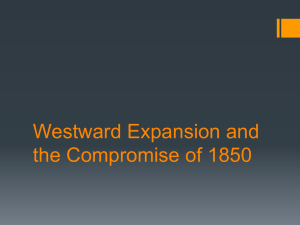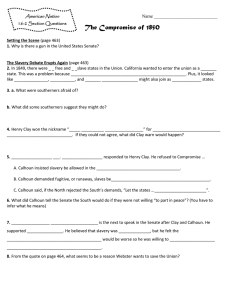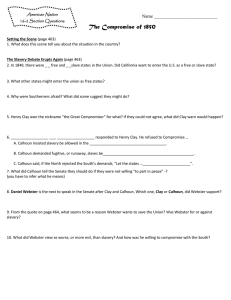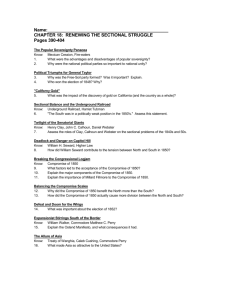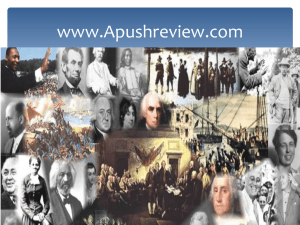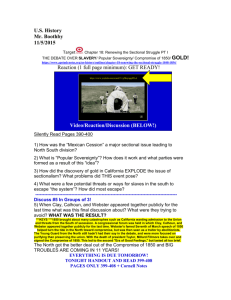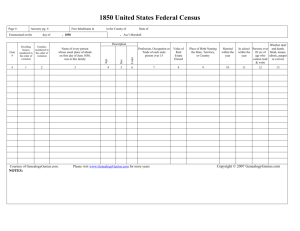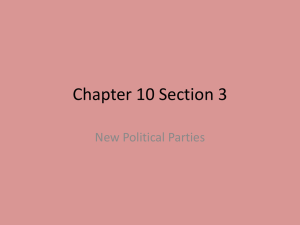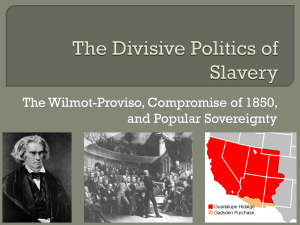The Mexican-American War and Sectionalism
advertisement
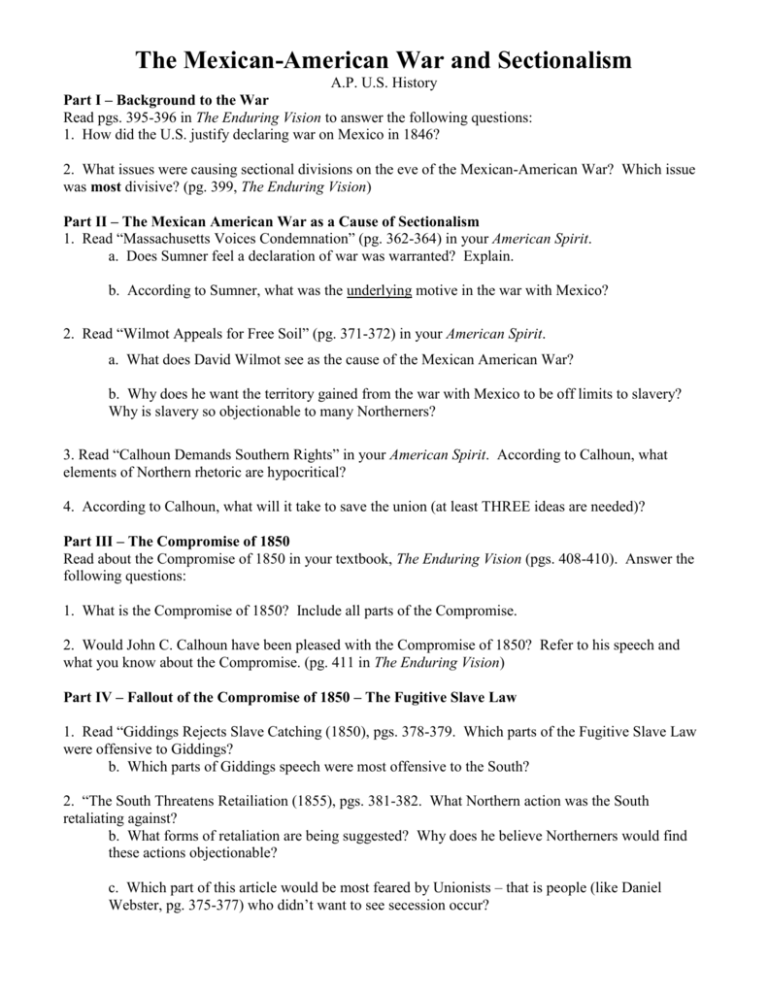
The Mexican-American War and Sectionalism A.P. U.S. History Part I – Background to the War Read pgs. 395-396 in The Enduring Vision to answer the following questions: 1. How did the U.S. justify declaring war on Mexico in 1846? 2. What issues were causing sectional divisions on the eve of the Mexican-American War? Which issue was most divisive? (pg. 399, The Enduring Vision) Part II – The Mexican American War as a Cause of Sectionalism 1. Read “Massachusetts Voices Condemnation” (pg. 362-364) in your American Spirit. a. Does Sumner feel a declaration of war was warranted? Explain. b. According to Sumner, what was the underlying motive in the war with Mexico? 2. Read “Wilmot Appeals for Free Soil” (pg. 371-372) in your American Spirit. a. What does David Wilmot see as the cause of the Mexican American War? b. Why does he want the territory gained from the war with Mexico to be off limits to slavery? Why is slavery so objectionable to many Northerners? 3. Read “Calhoun Demands Southern Rights” in your American Spirit. According to Calhoun, what elements of Northern rhetoric are hypocritical? 4. According to Calhoun, what will it take to save the union (at least THREE ideas are needed)? Part III – The Compromise of 1850 Read about the Compromise of 1850 in your textbook, The Enduring Vision (pgs. 408-410). Answer the following questions: 1. What is the Compromise of 1850? Include all parts of the Compromise. 2. Would John C. Calhoun have been pleased with the Compromise of 1850? Refer to his speech and what you know about the Compromise. (pg. 411 in The Enduring Vision) Part IV – Fallout of the Compromise of 1850 – The Fugitive Slave Law 1. Read “Giddings Rejects Slave Catching (1850), pgs. 378-379. Which parts of the Fugitive Slave Law were offensive to Giddings? b. Which parts of Giddings speech were most offensive to the South? 2. “The South Threatens Retailiation (1855), pgs. 381-382. What Northern action was the South retaliating against? b. What forms of retaliation are being suggested? Why does he believe Northerners would find these actions objectionable? c. Which part of this article would be most feared by Unionists – that is people (like Daniel Webster, pg. 375-377) who didn’t want to see secession occur? Part V - The Impact of Uncle Tom’s Cabin 1. Read “Tom Defies Simon Legree” (pg. 387-389). What three details of the reading would most offend Northerners? b. What three details of the reading would most offend Southerners? 2. Read “The South Scorns Mrs. Stowe” (pg. 389-391). According to the article what are two problems that Southerners had with Uncle Tom’s Cabin? b. Look at the drawings on pg. 390. What was the purpose of these drawings? What conclusion do they guide the reader to? 3. Read“The London Times Demurs” (pg. 391-392). What problem does the London Times see in Uncle Tom’s Cabin? How does the London Times suggest the North convince the South to end slavery?
